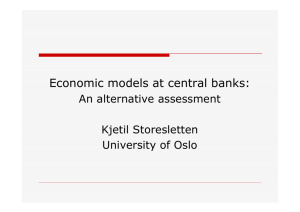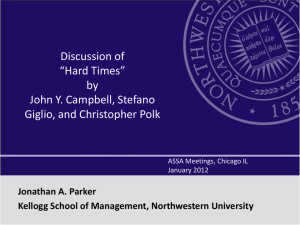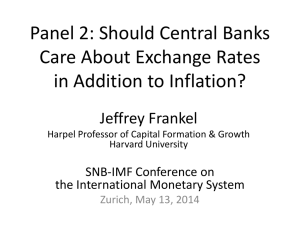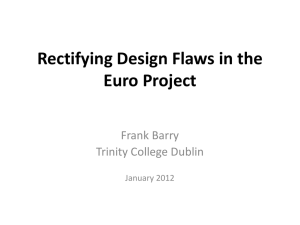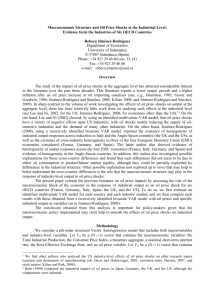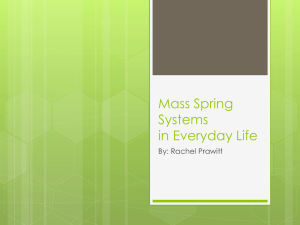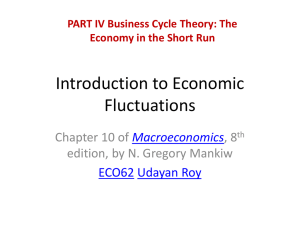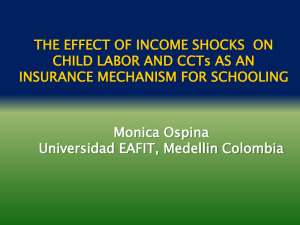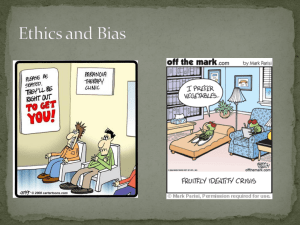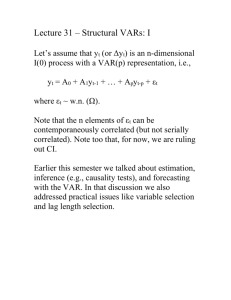Part 1
advertisement
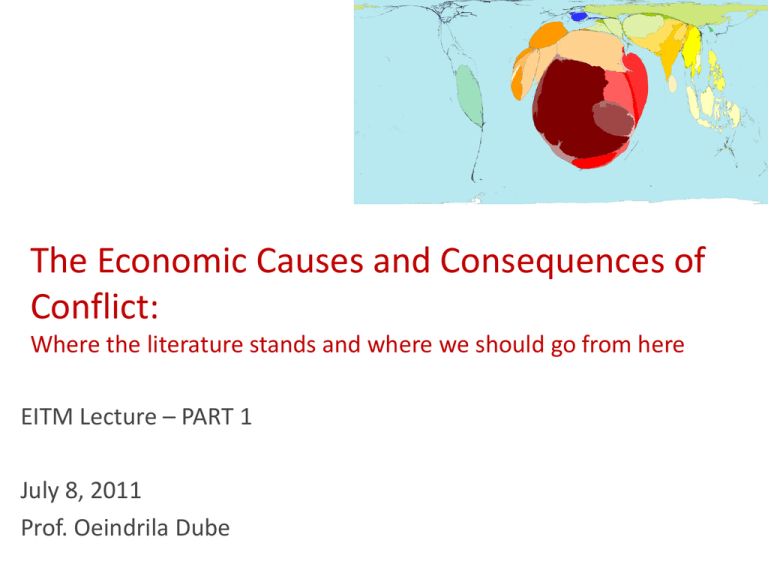
The Economic Causes and Consequences of Conflict: Where the literature stands and where we should go from here EITM Lecture – PART 1 July 8, 2011 Prof. Oeindrila Dube Outline • Introduction • The economic causes of conflict – Income and conflict – Aid and conflict • The economic consequences of conflict 1. Introduction: Why should we think about the relationship between economic development and civil war? State-Based Armed Conflicts by Type, 1946-2006 2007 Human Security Report brief Two facts on civil wars • Claimed more than 10.1 million lives between 1946-2005 • More than 1/3rd of the developing nations affected Loss of Life World map, scaled to war deaths in 2002 http://www.worldmapper.org/display.php?selected=288 2. The Economic Causes of Conflict Income shocks and conflict Per-capita income and conflict likelihood • Several cross-country analyses have established a negative correlation between GDP per capita and conflict – Collier and Hoeffler (1998, 2001, 2002) – Fearon and Laitin (2003) • Challenges to identification? Reverse Causality Poverty; low income Civil War Omitted Variable Bias Weak states, low governance capacity, bad institutions/leaders Poverty Civil War Economic Shocks and Civil Conflict Miguel, Satyanath and Sergenti (2004) • Do GDP growth shocks affect likelihood of conflict? • Use rainfall shocks as an instrument for growth shocks – Extreme rainfall (i.e., drought) harms agriculture – Found negative growth shock reduced probability of conflict in Sub-Saharan Africa, 1981-1999 • Requirements for a credible IV – Exclusion restriction: no other channels through which instrument affects dependent variable – Instrument correlated with endogenous variable First-stage relationship contingent on time period Miguel and Satyanath (forthcoming) • Rainfall shocks are not correlated with growth in SSA when time period extended to 1981-2009 – Strong growth of non-agricultural sectors • Rainfall is not a valid instrument for growth on conflict in the post 1999 period Taking stock • No explicitly identified cross-country study shows a significant negative effect of GDP on risk of conflict – For the global sample – For SSA over full sample period • Doesn’t imply no relationship between income and conflict – We lack an instrument that applies to global sample – A more nuanced relationship between income and conflict? Possible Nuances • Heterogeneous treatment effects – Economic shocks may only affect conflict for some countries and not others • Different types of economic shocks may affect conflict in different directions Heterogeneous effect based on institutions Besley and Persson, 2010 Commodity Price Shocks and Civil Conflict: Evidence from Colombia Dube and Vargas (2010) Overview • Do different income shocks affect conflict differently? • Within-country analysis of Colombia: – Exploit exogenous international commodity price shocks to major exports (coffee and oil) – Exploits variation across regions in production of those exports Difference-in-differences empirical strategy • Compare changes in violence – Over time as price changes – Across regions that produce coffee/oil more intensively International price of coffee Coffee price fall increased conflict more in coffee region International price of oil Oil price rise increased conflict more in oil region Coffee prices: opportunity cost mechanism Price of Coffee falls Farmers wages falls Opportunity cost of fighting falls More conflict in coffeeregions Evidence of wage mechanism Oil prices: predation mechanism Price of oil rises More revenue in oil regions Armed groups fight to steal revenue More conflict in oil regions Evidence of predation mechanism Future work should disentangle resource curse mechanisms • Does the resource act as a prize that groups fight over? • Are resources used to finance conflict? • Does the presence of resource extraction generate grievances? – Inequitable resource distribution – Govt. provides fewer public goods Ways forward on income and conflict • Further work remains to be done in: – Understanding the nature of the income-conflict relationship – Providing evidence on channels • Micro data presents more opportunities for: – Looking at disaggregated shocks – Testing mechanisms directly Ways of getting micro-data on conflict • Event-based data • Dube and Vargas (newspaper and Catholic priest reports) • ACLED for select countries : http://www.acleddata.com/ • Household surveys on retrospective conflict experience • Bellows and Miguel, 2006 • Microcon: http://www.microconflict.eu/index.html • Testimony from truth and reconciliation commissions • Yanagiza, 2010; Leon, 2009 • Mortality statistics to look at homicides • Angrist and Kugler, 2008; Dube, Dube and Garcia-Ponce, 2010

